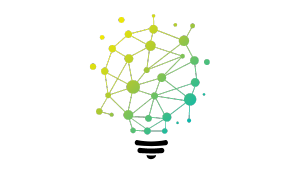In an era where digital transformation and advanced data solutions are not just an option but a necessity, the utility industry stands at a critical juncture. As a seasoned professional in the energy and utilities sector, I've witnessed firsthand the transformative potential of integrating advanced technologies into utility operations. The call for grid modernization and digitalization has never been more pressing, and the role of Artificial Intelligence (AI) in this evolution is pivotal.

The Imperative for Smart Grids and Data Analytics
The traditional utility grid, with its linear and somewhat rigid structure, is increasingly proving inadequate to meet the dynamic demands of the present and future. The traditional grid was designed for a simpler time when energy consumption patterns were more predictable and centralized. However, with the rise of renewable energy sources, electric vehicles, and smart devices, the grid is facing unprecedented challenges in balancing supply and demand in real-time.
This outdated infrastructure is struggling to accommodate the fluctuating energy landscape, leading to inefficiencies, reliability issues, and increased vulnerability to disruptions. Through strategic capital upgrades, you can enhance your infrastructure's resilience and efficiency, ensuring it can adapt to evolving energy demands, mitigate risks effectively, and prioritize safety measures. Implementing state-of-the-art safety protocols and technologies as part of these upgrades can further safeguard both personnel and assets, fostering a secure operational environment amidst changing conditions and potential hazards.
SME often facilitates effective communication and collaboration with all stakeholders, fostering alignment and buy-in throughout the project lifecycle. Additionally, SME provides comprehensive end-user training and documentation to ensure smooth adoption and utilization of new systems or processes, enhancing the overall success and sustainability of your initiatives. As such, the transition to smart grids powered by AI and advanced data analytics has become not just a technological advancement, but a necessity for ensuring the reliability and sustainability of our energy systems.
The integration of digital technologies is essential to transform the grid into a more flexible, efficient, and resilient network that can adapt to the evolving needs of modern society. Enter the concept of smart grids—agile, resilient, and intelligent networks that leverage digital technology to enhance efficiency and reliability. Coupled with advanced data analytics, these smart grids enable a level of foresight and adaptability previously unimaginable.
AI and machine learning, the bedrock of this digital transformation, are revolutionizing how we approach grid management. Their capacity to process vast amounts of data in real-time translates into unprecedented operational insights, making our grids not only smarter but also more responsive to the fluctuating energy landscape.
The transition to smart grids, enhanced by AI and advanced data analytics, is essential for creating flexible, efficient, and resilient energy systems.
In my years in this industry, I've seen plenty of 'next big things,' but the smart grid's promise is real. It's not just about technology; it's about redefining our relationship with energy and data.
Enhancing Grid Efficiency and Reliability with AI
AI's impact on the utility industry goes beyond just demand forecasting. It has the potential to revolutionize many operational aspects, from grid management to customer service. By harnessing the power of AI, utilities can safely optimize their operations, enhance customer experiences, and drive innovation in a rapidly evolving energy landscape.
The ability of AI to accurately predict energy requirements is just the tip of the iceberg. These insights enable utilities to not only optimize generation and distribution but also proactively address potential challenges, such as peak demand periods or unexpected fluctuations in supply. This proactive approach not only reduces waste but also ensures a stable and reliable energy supply for consumers.
Furthermore, AI-driven systems provide a rapid and intelligent response to outages and system anomalies. By leveraging real-time data analysis, these systems can swiftly identify and diagnose issues, minimizing downtime and enhancing the overall reliability of the energy supply. This enhanced reliability is crucial for maintaining economic stability and ensuring that essential services are readily and safely available to communities.
In essence, AI is transforming the utility industry into a more efficient, responsive, and customer-centric sector. It's not just about improving operational efficiency; it's about redefining how utilities interact with their customers and adapt to the changing demands of a modern society. The integration of AI is not just a technological advancement; it's a strategic imperative for utilities looking to thrive in a digital age.
AI significantly improves demand forecasting, energy distribution, and outage response, leading to more reliable and efficient grid operations.
While many in our field are focused on the hardware of energy transmission, I argue that the software—AI and machine learning—will be the true backbone of our future grid. It's high time we invest as much in our digital infrastructure as we do in our physical one.
Navigating the Implementation of AI Solutions
Navigating the implementation of AI solutions in utility operations is a multifaceted endeavor that requires a strategic and thoughtful approach. Drawing from my extensive research and hands-on knowledge of the industry, it is evident that one of the key challenges lies in the intricacy of not just selecting the right AI technologies to adopt, but also in structuring their implementation in a way that maximizes benefits while minimizing risks. This critical juncture is where the true potential of AI integration in utilities can be unlocked, moving beyond mere adoption towards a comprehensive and holistic digital transformation strategy.
To successfully navigate this complex landscape, utilities must develop a well-rounded strategy that encompasses various crucial elements. This includes conducting thorough financial analyses to understand the investment implications and potential benefits, carefully selecting the most suitable technologies that align with organizational goals, implementing robust project management practices to ensure smooth deployment, embracing change management strategies to facilitate organizational adaptation, providing adequate training to upskill employees, and establishing clear documentation processes for transparency and accountability.
By incorporating all these components into their approach, utilities can not only ensure the technical success of the AI integration but also lay the groundwork for long-term organizational sustainability. This strategic and comprehensive approach is essential in overcoming the challenges posed by AI implementation and maximizing the transformative potential of digital technologies in the utility sector.
Successful AI integration in utilities requires a strategic approach, including comprehensive planning and organization-wide change management.
The biggest obstacle to AI implementation isn't technical—it's cultural. In my experience, the most sophisticated AI systems can fail without the right organizational mindset and readiness for change. You really need support, especially executive level sponsorship.
Expanding AI Use Cases in Utility Management
Vegetation management: By utilizing AI algorithms to analyze remote sensing data, drones, and satellite imagery, utilities can accurately identify potential vegetation hazards near power lines and infrastructure. This proactive approach allows for timely and targeted vegetation removal, reducing the risk of outages caused by tree branches or overgrown vegetation interfering with power lines.
Furthermore, AI can also aid in predicting vegetation growth patterns and assessing the health of trees near power lines. By analyzing historical data and environmental factors, utilities can develop predictive models to anticipate future vegetation growth and plan maintenance activities accordingly. This predictive approach not only enhances grid reliability but also minimizes the need for reactive maintenance, ultimately saving costs and improving operational efficiency.
Overall, the integration of AI in vegetation management not only ensures the safety and reliability of the grid but also enhances environmental sustainability by promoting responsible and proactive vegetation maintenance practices. This innovative use of AI technology exemplifies the transformative potential of digital solutions in the utility sector, driving efficiency, reliability, and customer satisfaction.
Asset management: AI can also revolutionize asset management in the utility sector. By utilizing AI algorithms to analyze data from sensors and other sources, utilities can predict equipment failures before they occur, enabling proactive maintenance and reducing downtime. This predictive maintenance approach not only saves costs but also enhances the overall reliability of the grid.
Energy distribution: AI can optimize energy distribution by analyzing consumption patterns and grid performance in real-time. By dynamically adjusting energy flows and optimizing grid operations, utilities can ensure a more efficient and reliable supply of electricity to consumers. This real-time optimization capability is essential in meeting the evolving energy demands of modern society and ensuring grid stability.
The practical applications of AI in the utility sector are diverse and impactful. From vegetation management to asset management and energy distribution, AI is reshaping the way utilities operate and delivering tangible benefits in terms of efficiency, reliability, and customer satisfaction. The integration of AI technologies is not just a trend but a strategic imperative for utilities looking to thrive in a rapidly changing energy landscape.
AI applications in vegetation management and storm damage assessments demonstrate the technology's potential to enhance operational efficiency and safety.
When I use to hear about AI-driven vegetation management program, the skepticism was palpable. Now, it's one of the most exciting use cases. It's a testament to how AI can turn one of our most routine challenges into an area of innovation.
Conclusion
The journey towards a fully digital and AI-enabled utility sector is complex and challenging, but the benefits stand to be undeniable. As professionals in this industry, we must advocate for and lead the charge in this digital transformation. Our role extends beyond mere adoption of new technologies; it involves rethinking our operational structures, investing in skill development, and fostering a culture of innovation and adaptability.
The potential of AI in the utility industry is immense, but realizing it requires more than just technological investments. It demands a strategic vision, a commitment to change management, and a willingness to embrace new paradigms. The time to act is now; the future of our industry depends on our ability to adapt and innovate in the face of an ever-changing energy landscape.
The journey to a digitized, AI-enhanced utility industry is complex but necessary, and being ready for AI is crucial. It requires a visionary approach, embracing technological and organizational change.
We stand at the cusp of a major transformation. The question isn't if we will adapt to AI and digitalization, but how swiftly and effectively we can do it. Let's lead this charge, not just for the sake of innovation, but for a more sustainable and resilient future.
Get In Touch With Us Today
.png?width=700&height=127&name=Blue%20Mantis%20formerly%20known%20as%20SME%20Solutions%20Group%2c%20Inc.%20(GREEN).png)



